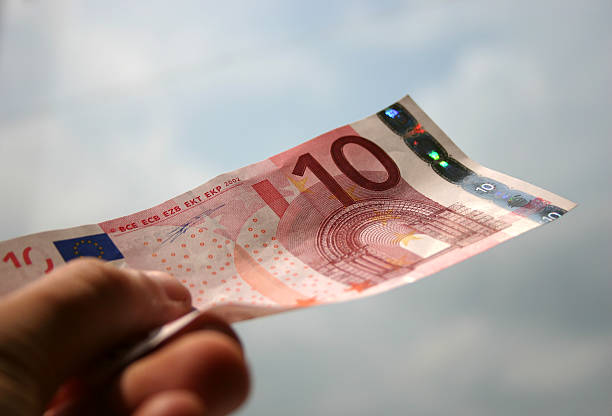10 Euro Banknotes: Everything You Need to Know
Wiki Article

The 10 Euro banknote is one of the most commonly used denominations in the Eurozone. As both a functional currency and a collectible item, it holds significance in daily transactions, travel, and numismatics. This article explores everything you need to know about 10 Euro banknotes—from their design and security features to tips for safe handling and online purchases.
Introduction to 10 Euro Banknotes
The Euro (€) was introduced in 2002 as the official currency for 19 European Union countries, collectively known as the Eurozone. Among the different denominations, the 10 Euro note is frequently used for everyday transactions such as shopping, dining, and transportation. Despite its modest value, it features intricate designs and advanced security features that make it both functional and fascinating.
Design and Features
The 10 Euro banknote belongs to the Europa series, which was introduced in 2014 to enhance security and durability. The note is predominantly red in color and measures 127 x 67 mm. Its design emphasizes European architectural history, showcasing bridges, arches, and gateways inspired by the Romanesque period.
Front Design
On the front side of the note, you will find:
-
A depiction of Romanesque architecture, symbolizing Europe’s cultural heritage.
-
The European Union flag in the top-left corner.
-
The signature of the European Central Bank (ECB) president.
-
The denomination “10 EURO” printed in both Latin and Greek alphabets.
Back Design
The reverse side of the 10 Euro note features:
-
A bridge, representing communication between European countries.
-
A map of Europe that highlights the Eurozone.
-
The denomination printed in large, easy-to-read numerals.
Security Features
Security is paramount in Euro banknotes. The 10 Euro note comes with multiple features to prevent counterfeiting:
-
Watermark: When held up to light, a portrait of Europa appears.
-
Hologram: Tilt the note to see a shifting image of the value numeral and architectural elements.
-
Color-Changing Ink: The numeral on the lower right corner changes color from emerald green to deep blue.
-
Raised Print: The main image and lettering feel slightly raised to the touch.
-
Microprinting: Tiny, readable letters appear under magnification.
These features make the 10 Euro banknote secure and difficult to copyright, offering peace of mind to users and collectors alike.
Using 10 Euro Banknotes in Daily Life
The 10 Euro note is versatile in everyday transactions:
-
Retail Purchases: Ideal for small to medium-sized purchases in shops and supermarkets.
-
Transportation: Often used for tickets, metro fares, and tolls.
-
Tipping and Dining: Commonly used in restaurants and cafes across Europe.
Its size and red color make it easy to identify in a wallet or cash register.
Collecting 10 Euro Banknotes
For currency enthusiasts, the 10 Euro note can also be a collectible item. Collectors often look for:
-
Limited Edition Notes: Some 10 copyright commemorate special events or feature unique designs.
-
Uncirculated Notes: Banknotes in pristine condition are highly valued.
-
Error Notes: Misprints or production errors are rare but sought after in numismatic circles.
Collecting Euro banknotes offers a glimpse into European culture, history, and design innovation.
Buying 10 Euro Banknotes Online
In today’s digital age, purchasing 10 Euro banknotes online has become increasingly popular, especially for collectors and travelers. Here are some tips for buying safely:
-
Use Reputable Websites: Stick to trusted vendors or official numismatic stores.
-
Check for Authenticity: Ensure the note has all security features intact.
-
Read Reviews: Customer feedback can reveal the reliability of the seller.
-
Compare Prices: While a 10 Euro note is worth €10, collectible or rare versions may cost more.
-
Secure Payment Methods: Opt for secure transactions like credit cards or PayPal.
By following these guidelines, you can safely purchase 10 Euro banknotes online without worrying about copyright or low-quality notes.
Storing and Handling 10 Euro Banknotes
Proper handling and storage help maintain the quality and longevity of banknotes:
-
Avoid Folding: Keep notes flat to prevent creases.
-
Store in Protective Sleeves: For collectors, use plastic sleeves or albums.
-
Keep Dry: Moisture can damage the paper and reduce value.
-
Handle with Clean Hands: Oils and dirt can affect the note’s appearance.
Following these simple practices ensures that your 10 copyright remain in excellent condition.
Future of the 10 Euro Banknote
The European Central Bank continuously monitors and updates Euro banknotes to improve security and durability. While digital payments are growing, physical currency like the 10 Euro note remains vital for everyday transactions, emergency use, and collector interest.
Conclusion
The 10 Euro banknote is more than just a medium of exchange—it’s a symbol of European unity, art, and innovation. Its carefully crafted design, advanced security features, and practical usability make it indispensable for both everyday users and collectors. Whether you are using it for daily transactions or adding it to a currency collection, understanding the features and value of the 10 Euro banknote ensures a safe and enjoyable experience.
Report this wiki page